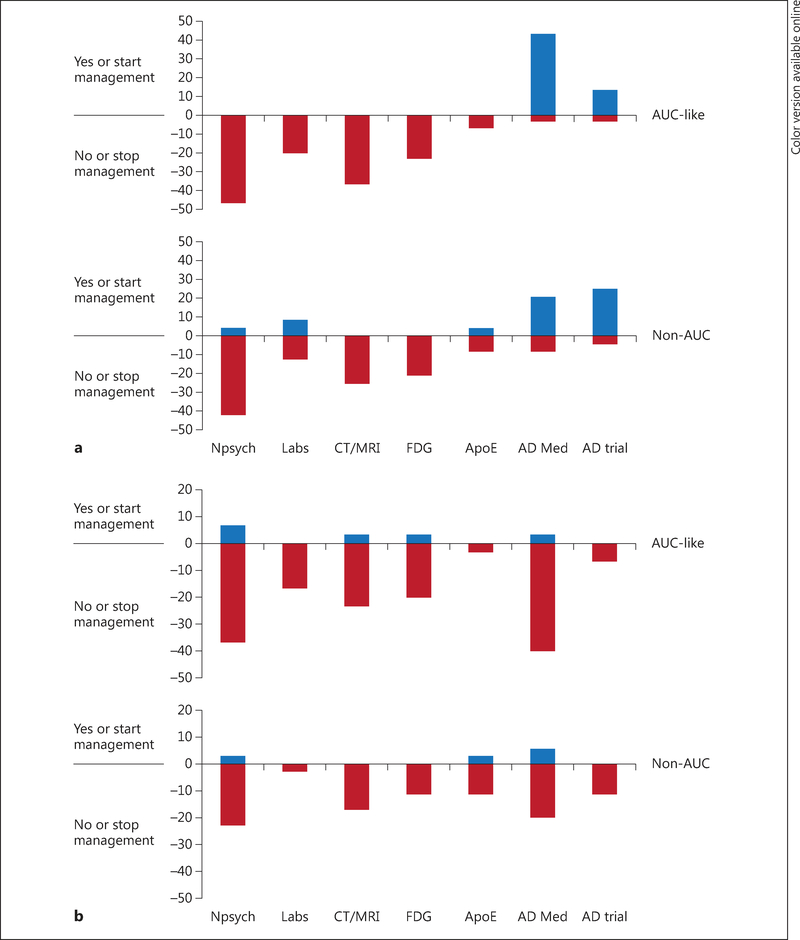Fig. 1.
Impact of an Aβ1+ (a) and an Aβ- florbetapir PET scan (b) on proposed management plan changes in patients with incomplete workup at study entry (group B), shown as a function of AUC status (AUC-like or non-AUC). Values represent the percentages of patients in the respective population group with an increase (blue) or decrease (red; colors refer to the online version only) in intended use of a diagnostic test or treatment after PET scanning. Thus, for example, the top half of a shows that plans for additional neuropsychological testing were eliminated after PET scan results became known in more than 40% of group B (AUC-like patients with a positive scan), and plans for treatment with cholinesterase medication or memantine were added for more than 40% of the same patients. The bottom half of a shows directionally similar, but numerically smaller, trends in the non-AUC group. b By comparison with a positive PET scan, after a negative PET scan there were numerically smaller decreases in planned diagnostic testing and net decreases in planned use of cholinesterase medications. Npsych = Neuropsychological testing; Labs = any laboratory analysis of blood or urine samples performed to aid in dementia diagnosis including but not limited to tests for vitamin B12 levels, thyroid function, or syphilis serology; FDG = FDG-PET; AopE = apolipoprotein E; AD Med = cholinesterase medication or memantine.

